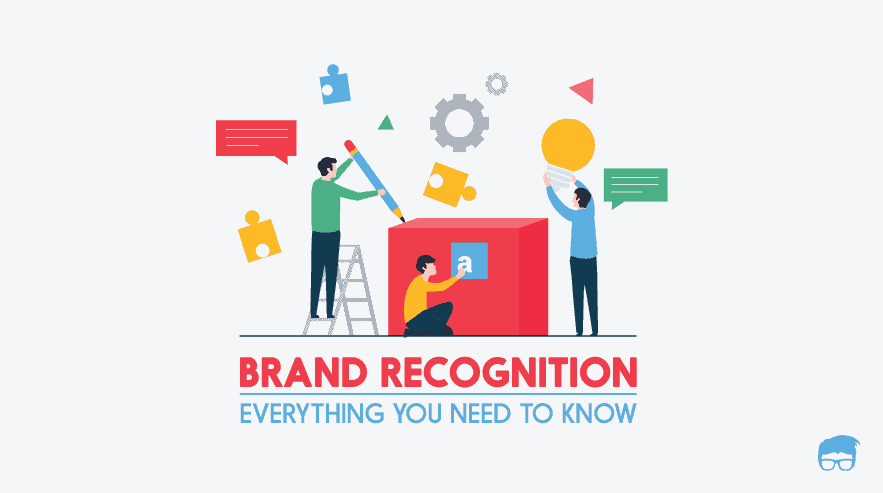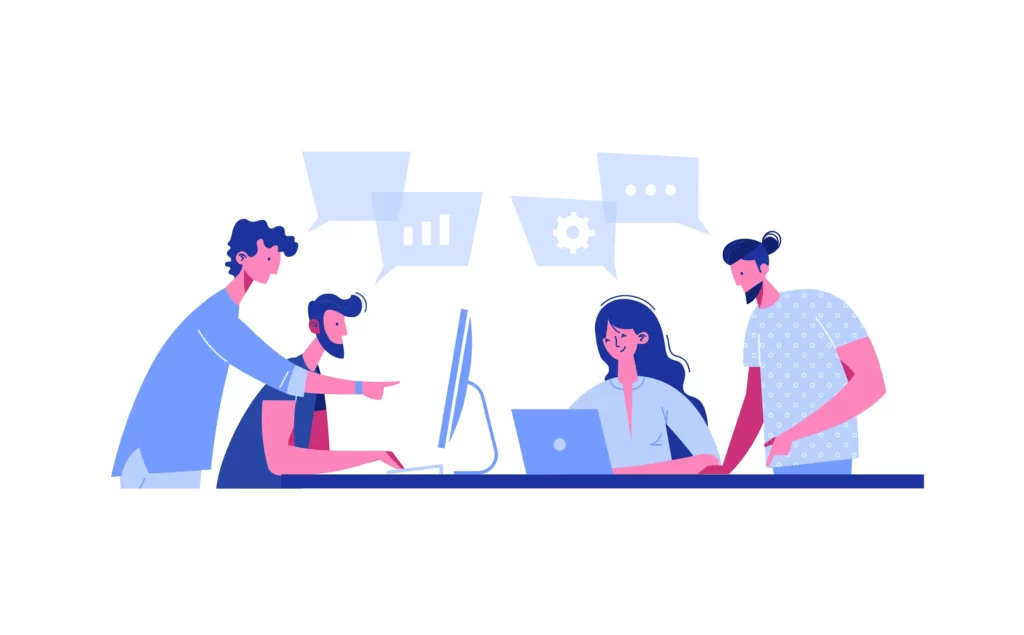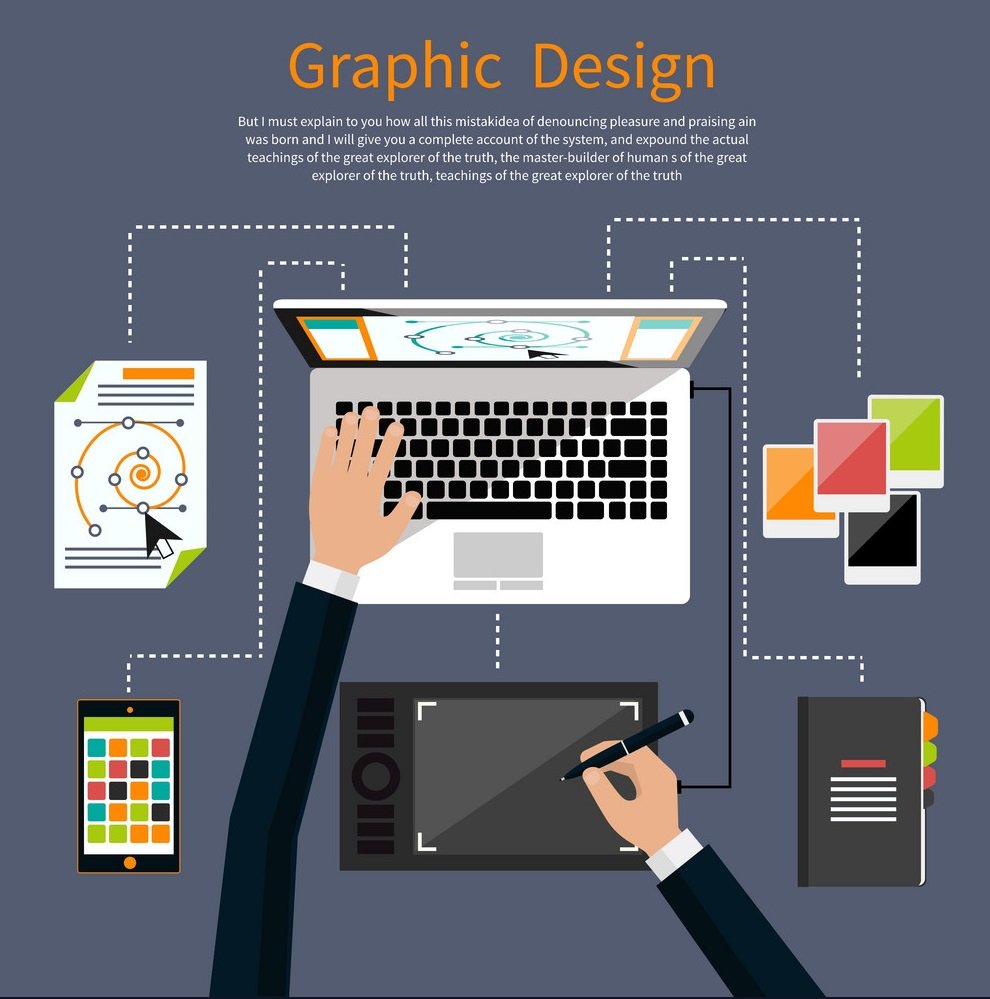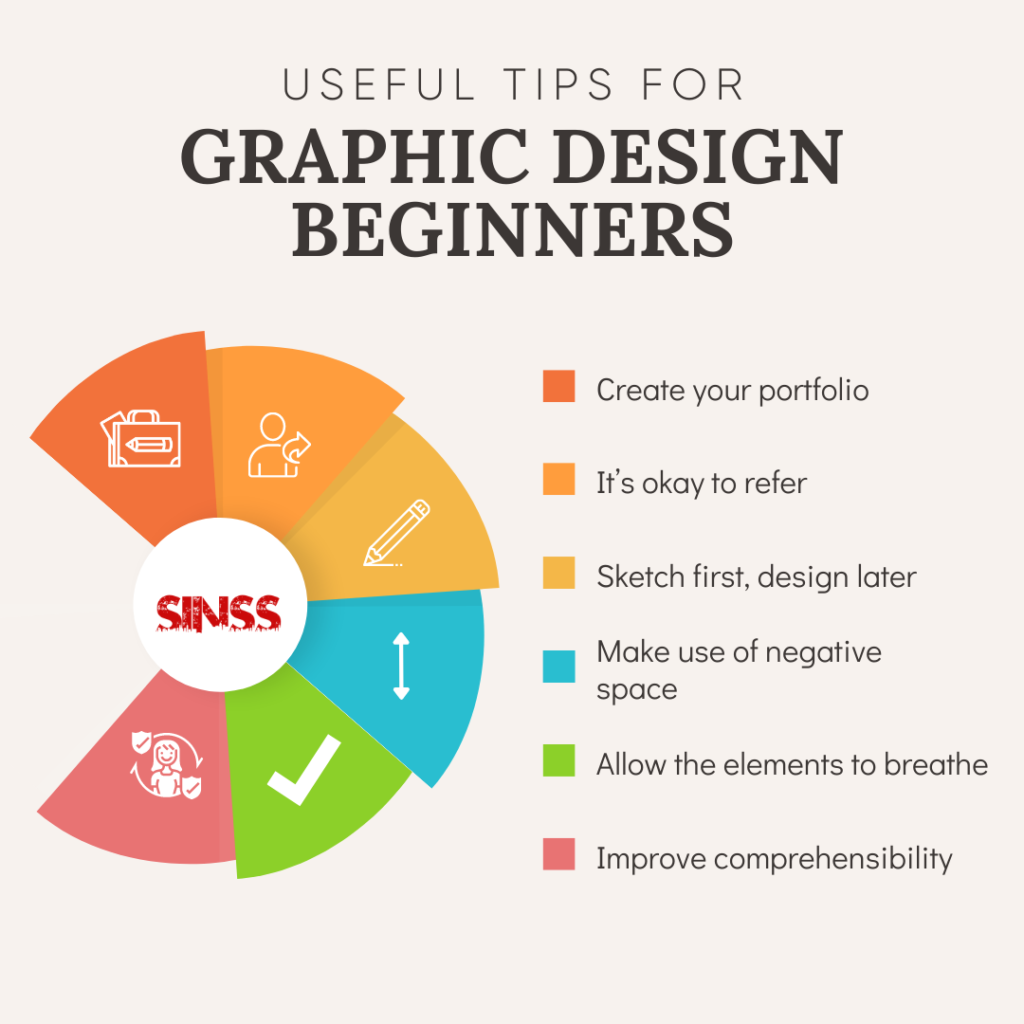
What is Graphic Design and a complete beginner’s guide to learn Graphic design?
As a graphic designer, you should be well-versed in color theory and the importance of selecting the proper color scheme. Colors must represent not just the company, but also the users’ expectations. Whenever we enter a store, the product with the most alluring packaging attracts us and THAT is a graphic designer’s job. Your visual content will swiftly determine the fate of your design, so don’t neglect even the tiniest trigger that might turn consumers off. Graphic designs allow you to convey yourself visually and in person.
graphics design
Graphic Design Meaning:
Graphic design is a career in which people make visual material to convey messages. Designers utilize typography and graphics to fulfill users’ demands and focus on the logic of showing visual hierarchy and use page layout ideas in interactive designs to optimize the consumers’ experience. In this context, aesthetic appeal and marketing both involve graphic design. To influence viewers, graphic designers use images, color, and typography.

Importance of Graphic design:
Consistency and Professionalism
As we all know, the first impression is the last one, thus we need to make a good one. From the perspective of your audience, the usage of logos, photos, and design may assist to build a professional image of your organization. Graphic design, when used correctly, provides visual consistency across all of your marketing initiatives, enhancing your company’s identity and brand awareness.
Brand Recognition and Identity
Graphic design aids in the creation of a visual identity for your firm that represents its goal and values. Your company’s branding starts with a brilliant logo and extends to many aspects of your business communication, including presentation templates, brochures, advertisements, websites, and videos. When customers hear your name or a product you sell, the first thing that springs to mind is brand awareness. This is one of the reasons why the demand of a graphic designer can never decline in the near future.

Communication
Graphic design encompasses more than just developing a company’s identity and brand identification. It has the potential to draw attention and pique your audience’s interest in learning more. It is also useful to create aids to help you explain your thoughts more effectively. Thus, it is a form of visual communication, and many aspiring individuals opt for courses for the same.
Create a culture of trust, goodwill, and loyalty.
A well-designed brand establishes a professional image that fosters confidence and credibility, all of which are critical for business growth. By giving your workers a sense of identity and values to rally around and support, your brand develops loyalty and dedication. When it comes to persuading customers that your products or services are of high quality, trust is vital.

Steps to follow to learn Graphic Design:
Ø Design concepts that should be followed
Graphic design, essentially an art, is a combination of visual and written communication used to communicate information to clients straightforwardly and effectively. It’s usually done to boost a brand’s market effectiveness and create a strong image in the eyes of customers. The visual design incorporates graphic elements such as font, color, and illustration. The following are essential concepts that any graphic designer must adhere to:
• Hierarchy
• Alignment
• Contrast
• Space
• Color
• Proximity
• Repetition
• Balance
To create a unified, powerful, and valuable image, every graphic designer must adhere to these guidelines. They must be aware of unusual and powerful color combinations. For example, red is commonly used for warnings/alerts, whereas green is commonly used for notifications. As a result, before moving on to the next phase, the prospective graphic designer should be well-versed in these concepts. This will assist him in providing better and more in-depth knowledge.
Ø Enroll in a course
The majority of people believe that having a good eye for design or the capacity to create a visual is a natural or inherent talent, however, this is not the case. It is a talent that must be mastered. Everyone is creative and inventive, but how they fuel their imagination sets them apart from others who are unable to do so. A good graphic design course covers a wide range of topics such as the history of graphic design, the different subgroups within the subject, the psychology behind design concepts, and the tools you need. These courses are available on Coursera, Udemy, Skill-share, and, of course, YouTube University. The best aspect is that it is free, but you will not have access to comprehensive information on the subject. Such graphic design courses are online as well as offline.

Ø Master design tools
Just taking a course isn’t going to help you. You’ll need to know how to use Adobe Photoshop, Illustrator, and InDesign. These are the most commonly used graphic design programs. These are some of the most effective instruments for a successful career in this field. Although they are not free to use, they are an investment. Fantastic investment with a significant return on investment shortly.
Ø Practice, Practice, Practice
Whether you’re an expert or a beginner, you can easily lose the essence of your expertise if you don’t practice. Being a master requires a lot of practice. This is an ever-changing period in which something new is launched onto the market every day, and you must keep up with it. Now that you have a basic understanding of graphic design concepts and have learned from an expert, it’s time to teach yourself and get experience. Start with creating your designs, and after you’re confident in your abilities, look for opportunities to gain real-world experience.

Ø Socialize with your fellow designers
You can work as a graphic designer for a local social marketing agency, connect with people/groups who exchange information through LinkedIn and give your sample designs to them, or work as a freelancer. Networking is crucial to advancing your career in this field. The more you network, the more likely you are to have a successful job.
6 Useful Tips to remember while learning graphic design
Ø Create your portfolio
As soon as you decide to pursue a career as a graphic designer, you need to create portfolios of your work on sites like Pinterest, Behance, and Dribble. Having an inspiring work portfolio can aid in the development of your creativity as well as provide insight into what the industry is searching for.
You can also check our work portfolio at: https://sinss.in/portfolio.html
Ø It’s okay to refer
Once you’ve compiled a portfolio of your work, start practicing. You can look for inspirations, but can’t use them in your design portfolio because it’s a copyrighted design. It may help you be more creative and give you a better understanding of how a design should appear.
Ø Sketch first, design later
As a rookie designer, you may have a lot of ideas, but trying to place them on the canvas may be awkward, and your head might get cloudy if you can’t align them properly. So, first, sketch the design on white paper and attempt to align the pieces as best you can.
Ø Make use of negative space
In your design, negative space is an empty or white space. By adding objects and vectors to your canvas, you may try to make use of every nook and cranny. Make an effort to understand the psychology and emotions underlying various color schemes and fonts.
Ø Allow the elements to breathe
White spots on a canvas usually serve as a breathing space for the elements. The positioning of neighboring items needs to be such that the canvas doesn’t appear unfinished or crowded.

Ø Improve comprehensibility
Keep the material simple, straightforward, and easy to comprehend. Use typefaces that not only complement the content but also complement the mood of the backdrop colors. Keep typefaces in the same family as much as possible. Don’t cram too much information into a single canvas; instead, use related pieces to entice visitors to read the elements.
5 Common Graphic Design Mistakes and how you can avoid them:
Ø Incorrect font selection
Many beginners who are eager to create graphics try to employ everything that is accessible to them. Testing out different typefaces is good, but never overdo it. In your canvas, try to utilize at least two typefaces from the same family. Make your information as short as possible and keep the canvas to 50-60 characters.
Ø Incorrect color schemes
Before you begin creating, you should choose a color scheme that complement the utilized items as well as the logo. When you don’t grasp the color scheme, it can occasionally result in color clashes, which can be a turnoff. So it’s important to learn about color psychology and use it in designs.

Ø Disorganized graphics
One of the most typical blunders done by a novice visual designer is to create messy graphics. When a graphic designer is starting, they will often try to incorporate a variety of features, but this can result in cluttered designs that make it difficult to read the message. Use as few illustrations as possible.
Ø Alignment of text and graphics
Most novices struggle to align visuals and texts correctly. Alignment binds the entirety of the design together, along with the visual request. The best way to learn alignment is to keep experimenting until you find a balance
Ø Incorrect visual hierarchy
Essentially, this concept suggests that you should arrange the elements in order of priority. The majority of novices are unaware of this principle, making it difficult for readers to interpret the context. The most significant information should be in the biggest text, followed by a subtitle and the body. If this is done, readers can easily interpret the significance of each part.

Conclusion:
To summarize the subject, Graphic design focuses on both aesthetic and marketing considerations. The designers employ images, color, and typography to affect viewers.
Graphic design contributes to the construction of your company’s visual identity.
It also generates visual aids to aid in the explanation of your ideas. A well-designed brand establishes a professional picture, growing faith, and honesty. Graphic design is a mix of visual and written communication that is used to effectively communicate messages to clients.
If you want to have a great career in this industry, you’ll need to learn a few software programs and keep the advice in mind and avoid the mistakes that every novice does.
Contact us at sales@sinss.in and find out more at https://www.sinss.in/ Every business module like B2B and B2C can flourish through Creative Designs.




[…] Also, refer to https://sinss.in/blog/what-is-graphic-design-and-a-complete-beginners-guide-to-learn-graphic-design/ […]